Keyword: Microcystis
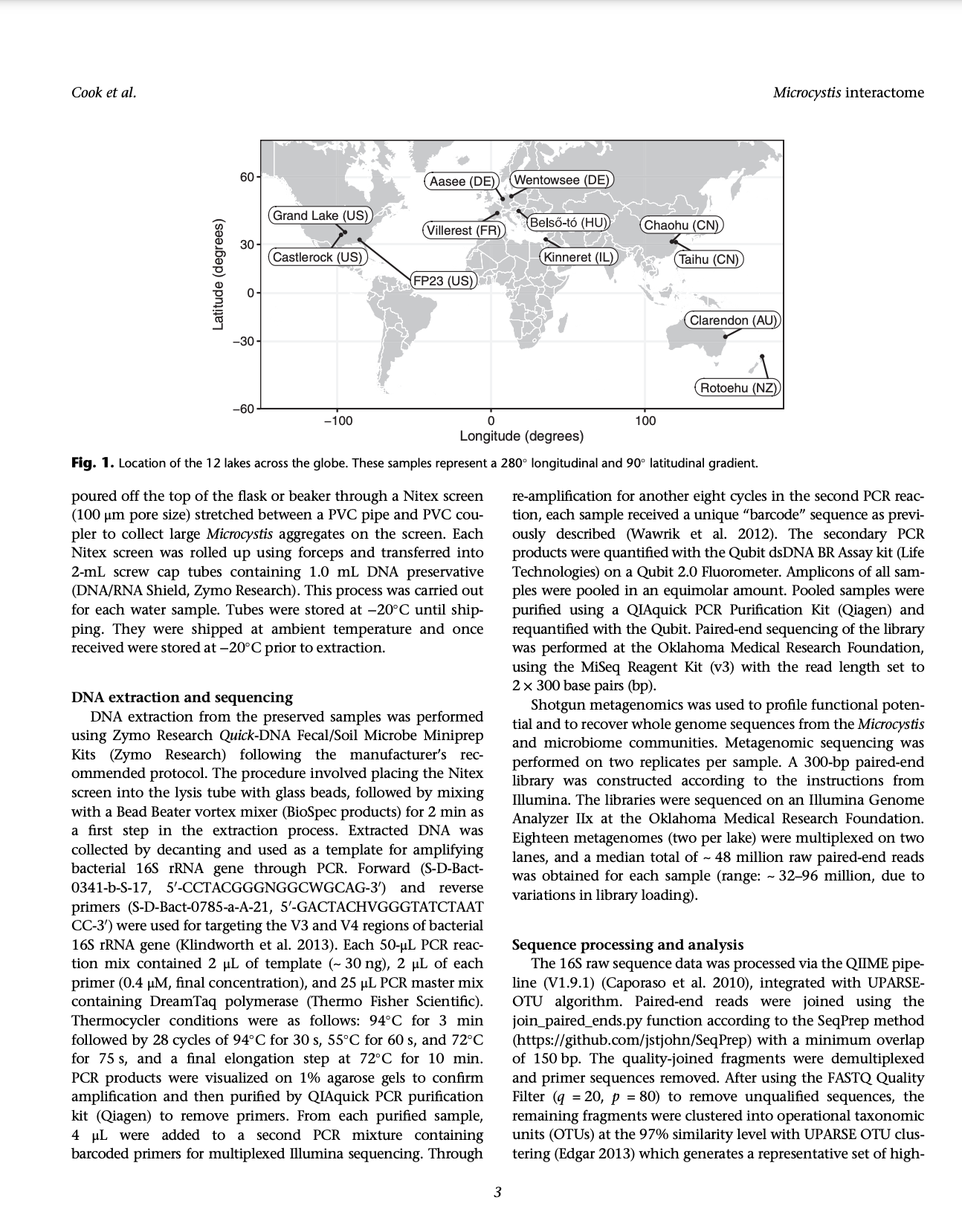
Cook, K. V., C. Li, H. Cai, L. Krumholz, K. D. Hambright, H. W. Paerl, M. Steffen, A. E. Wilson, M. Burford, H.-P. Grossart, D. Hamilton, H.-L. Jiang, A. Sukenik, D. Latour, E. Meyer, J. Padisak, B. Qin, R. Zamor, and G. Zhu. 2020. The global Microcystis interactome. Limnology and Oceanography 65:S194-S207.
Abstract
Bacteria play key roles in the function and diversity of aquatic systems, but aside from study of specific bloom systems, little is known about the diversity or biogeography of bacteria associated with harmful cyanobacterial blooms (cyanoHABs). CyanoHAB species are known to shape bacterial community composition and to rely on functions provided by the associated bacteria, leading to the hypothesized cyanoHAB interactome, a coevolved community of synergistic and interacting bacteria species, each necessary for the success of the others. Here, we surveyed the microbiome associated with Microcystis aeruginosa during blooms in 12 lakes spanning four continents as an initial test of the hypothesized Microcystis interactome. We predicted that microbiome composition and functional potential would be similar across blooms globally. Our results, as revealed by 16S rRNA sequence similarity, indicate that M. aeruginosa is cosmopolitan in lakes across a 280° longitudinal and 90° latitudinal gradient. The microbiome communities were represented by a wide range of operational taxonomic units and relative abundances. Highly abundant taxa were more related and shared across most sites and did not vary with geographic distance, thus, like Microcystis, revealing no evidence for dispersal limitation. High phylogenetic relatedness, both within and across lakes, indicates that microbiome bacteria with similar functional potential were associated with all blooms. While Microcystis and the microbiome bacteria shared many genes, whole-community metagenomic analysis revealed a suite of biochemical pathways that could be considered complementary. Our results demonstrate a high degree of similarity across global Microcystis blooms, thereby providing initial support for the hypothesized Microcystis interactome.
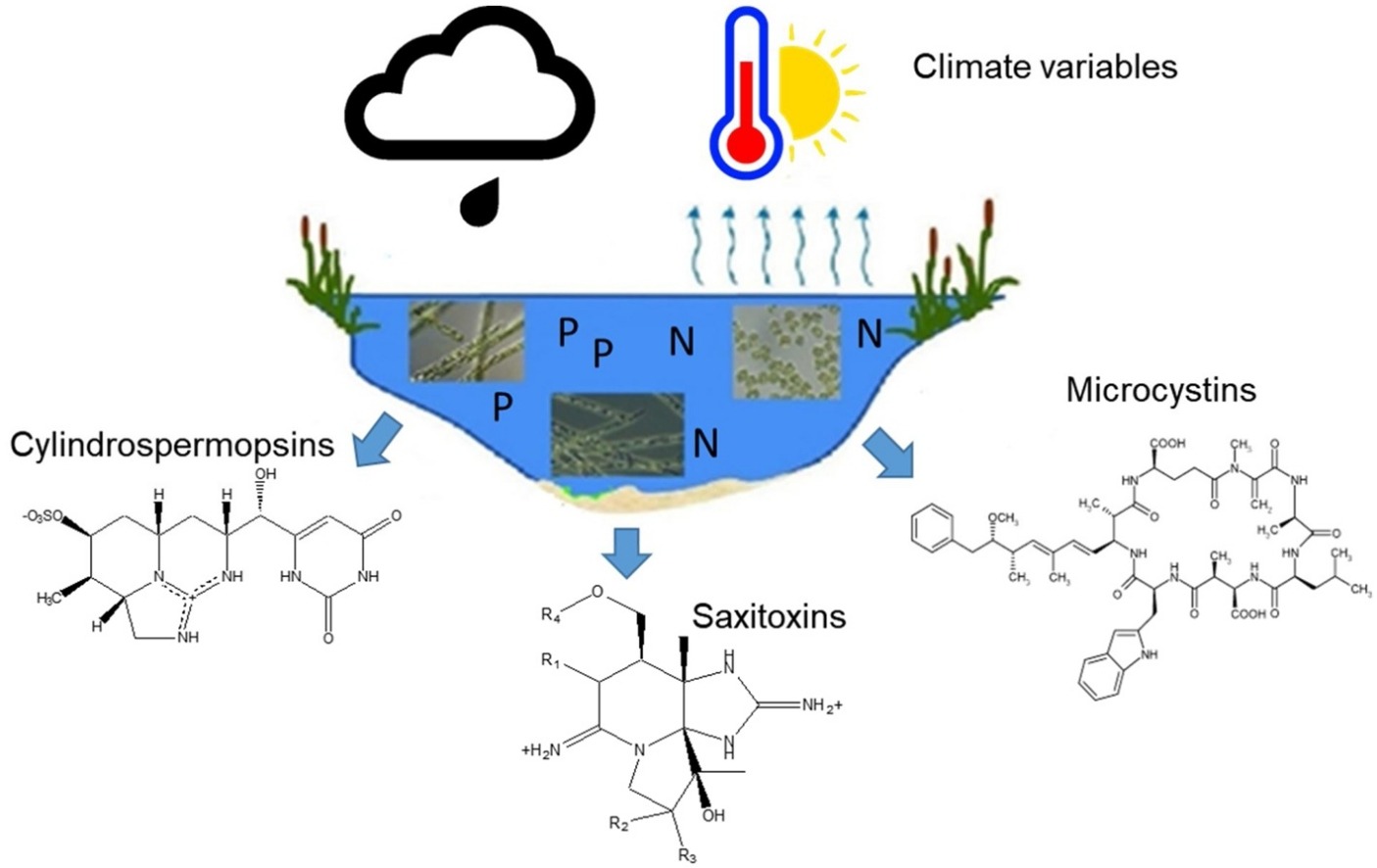
Barros, M. U. G., A. E. Wilson, J. I. R. Leitão, S. P. Pereira, R. P. Buley, E. G. Fernandez-Figueroa, and J. Capelo-Neto. 2019. Environmental factors associated with toxic cyanobacterial blooms across 20 drinking water reservoirs in a semi-arid region of Brazil. Harmful Algae 86:128-137.
Abstract
Cyanobacteria are known to produce a wide variety of bioactive, toxic secondary metabolites generally described as hepatotoxins, neurotoxins, cytotoxins, or dermatoxins. In Brazil, the regular monitoring of cyanobacterial toxins has intensified after the death of 65 patients in a hemodialysis clinic in Caruaru in the state of Pernambuco due to microcystin exposure. The primary objective of this study was to use multivariate statistics that incorporated environmental parameters (both biotic and abiotic) to forecast blooms of cyanobacteria and their toxic secondary metabolites in 20 drinking water reservoirs managed by the Water Treatment Company of Ceará (CAGECE) in the semi-arid region of Ceará, Brazil. Across four years (January 2013 to January 2017), 114 different phytoplankton taxa were identified, including 24 cyanobacterial taxa. In general, Ceará reservoirs were dominated by cyanobacteria due to eutrophication but also because of the dry and warm climate found throughout the region. Interestingly, specific cyanobacterial taxa were influenced by different biotic and abiotic factors. For example, nitrogen-to-phosphorus (N:P) and evaporation were positively related to saxitoxin-producing taxa, especially Raphidiopsis raciborskii, while temperature, electrical conductivity, total phosphorus, and transparency (measured as Secchi depth) were positively associated with microcystin-producing taxa, such as Microcystis aeruginosa. Climate forecasts predict higher evaporation and temperatures in the semi-arid Ceará region, which will likely magnify droughts and water scarcity as well as promote toxic cyanobacterial blooms in reservoirs in the future. Therefore, understanding the factors associated with algal blooms dominated by specific taxa is paramount for water resource management.
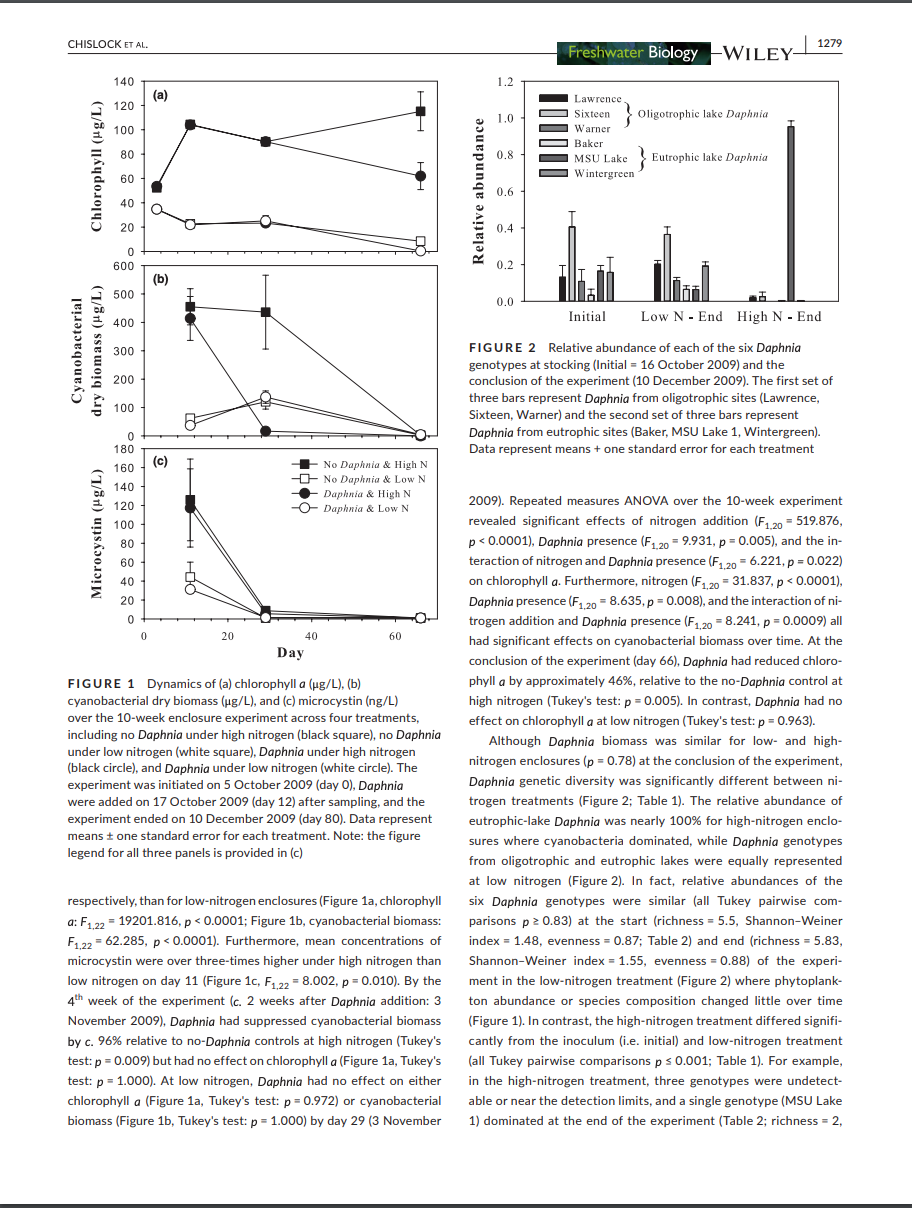
Chislock, M. F., R. B. Kaul, K. A. Durham, O. Sarnelle, and A. E. Wilson. 2019. Eutrophication mediates rapid clonal evolution in Daphnia pulicaria. Freshwater Biology 64:1275-1283.
Abstract
- Laboratory studies have revealed that Daphnia species can evolve to tolerate toxic cyanobacteria in the diet. Specifically, Daphnia from eutrophic lakes where cyanobacteria are common tend to have higher growth rates and survival when fed toxic cyanobacteria than populations from oligotrophic environments with low abundance of cyanobacteria.
- We conducted an in‐lake mesocosm (i.e. limnocorral) experiment during the autumn of 2009 to assess the effects of nutrient enrichment on clonal evolution in Daphnia pulicaria. As nutrient enrichment often favours grazing‐resistant cyanobacteria, we hypothesised that fertilisation would influence the genotypic composition of D. pulicaria that vary in tolerance to cyanobacteria. Mesocosms were fertilised to manipulate phytoplankton and cyanobacterial abundance and concentrations of a cyanobacterial toxin (microcystin). Thus, half of the mesocosms were high‐nutrient and half were low‐nutrient. We then stocked half of the mesocosms with a mixture of six genetically‐distinct D. pulicaria genotypes (three genotypes from oligotrophic lakes and three from eutrophic lakes) leaving half of the mesocosms Daphnia‐free to assess grazing effects, using a fully factorial design.
- When compared to the low nutrient treatment, high nutrient mesocosms had nearly five‐fold higher chlorophyll a concentrations, eight‐fold higher cyanobacterial dry biomass, and three‐fold higher microcystin levels at the start of the experiment. In contrast, low nutrient mesocosms had phytoplankton concentrations typical of mesotrophic lakes.
- Fertilisation strongly affected Daphnia genetic diversity in the mesocosms. Final Daphnia genotype diversity in the mesocosms with low‐cyanobacteria (richness = 5.83, Shannon–Weiner index = 1.55, evenness = 0.88) was similar to the initial stocked diversity (richness = 5.50, Shannon–Weiner index = 1.48, evenness = 0.87). In contrast, final diversity in fertilised mesocosms with high cyanobacteria was greatly reduced (richness = 2, Shannon–Weiner index = 0.17), with one Daphnia genotype that originated from the most‐eutrophic lake being highly dominant (evenness = 0.25). Thus, eutrophication mediated strong clonal selection of a cyanobacteria‐tolerant Daphnia genotype over just 10 weeks.
- By the end of the experiment, Daphnia significantly reduced phytoplankton biomass in the high‐nutrient, but not in the low‐nutrient treatment. This difference in effect size was largely driven by the five‐fold higher initial phytoplankton biomass in the high‐nutrient treatment. Thus, the ability of Daphnia to reduce phytoplankton biomass in eutrophic lakes may be driven more so by the abundance of planktivorous fishes, as opposed to the prevalence of cyanobacteria and their associated toxins.
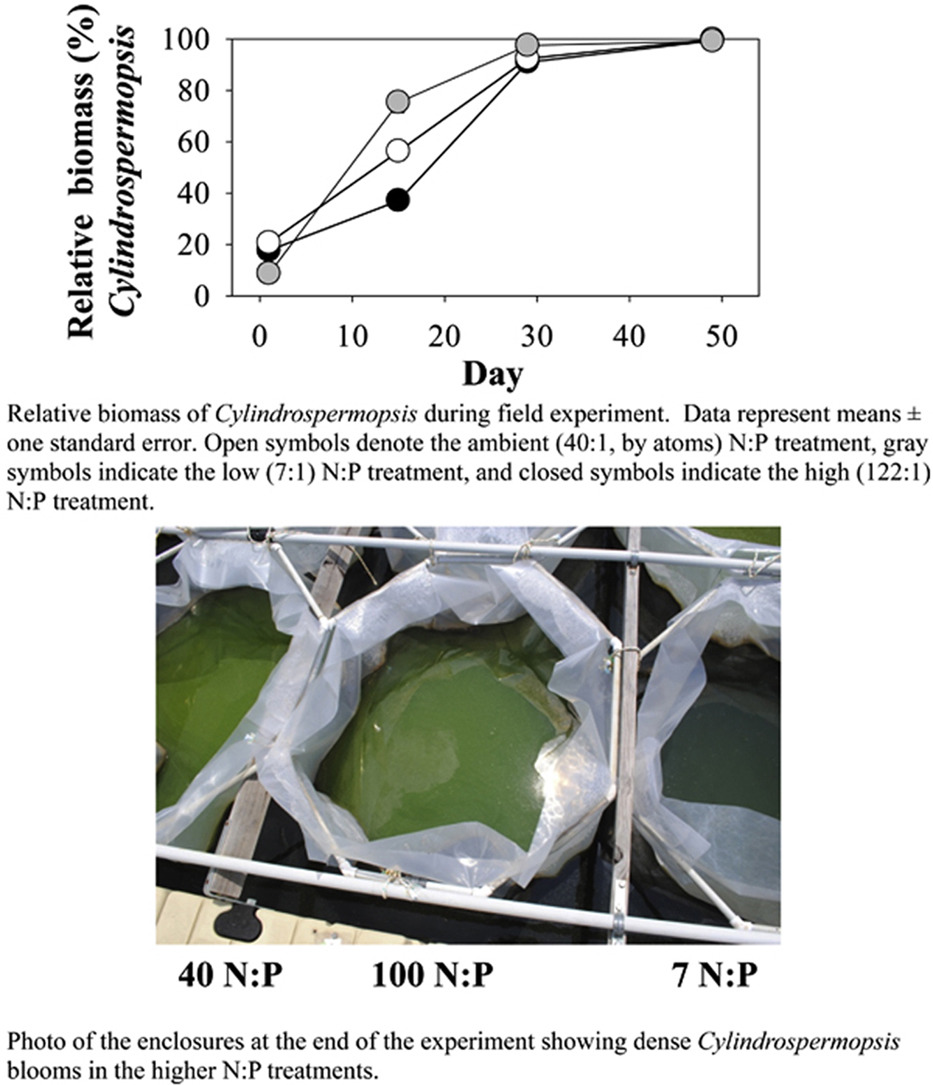
Chislock, M. F., K. L. Sharp, and A. E. Wilson. 2014. Cylindrospermopsis raciborskii dominates under very low and high nitrogen-to-phosphorus ratios. Water Research 49:207-214.
Abstract
In freshwater ecosystems, a variety of factors mediate phytoplankton community structure, including herbivore community structure, light availability, temperature, mixing, and absolute and relative nutrient concentrations (total nitrogen (TN), total phosphorus (TP)). Ecological stoichiometry examines how the nutrient content of organisms and their environment may mediate population-, community-, and ecosystem-level processes. The manipulation of N:P ratios is a widely regarded tool for managing phytoplankton species composition given that nitrogen-fixing cyanobacteria should dominate algal communities under relatively low N:P (<64:1, by atoms) given their ability to convert dissolved dinitrogen gas into organic nitrogen. However, due to the physiological expense of nitrogen fixation, diazotrophs should be outcompeted by non-nitrogen fixing phytoplankton under higher N:P when other environmental factors are similar. We tested this hypothesis in a field experiment using 2500-L limnocorrals installed in a eutrophic lake (ambient N:P ∼40:1 (by atoms); TN ∼1360 μg L−1; TP ∼75 μg L−1). At the start of the experiment, we randomly assigned limnocorrals among the ambient (40:1) and low (7:1) or high (122:1) N:P treatments (n = 4 replicates/treatment), which were established by adding P or N at the start of the experiment, respectively. The phytoplankton community in the enclosures at the start of the experiment was diverse (i.e., 18 phytoplankton genera) and dominated by chlorophytes (including Coelastrum and Scenedesmus (30% and 13% of total biomass, respectively)) and cyanobacteria (including Anabaena and Cylindrospermopsis (23% and 17% of total biomass, respectively)). In contrast to predictions based on ecological stoichiometry, the phytoplankton community in all N:P treatments increased in abundance and was almost entirely composed of the nitrogen-fixing cyanobacterium, Cylindrospermopsis raciborskii, by the conclusion of the study. Moreover, concentrations of the cyanobacterial neurotoxin, saxitoxin, were enhanced under the two highest N:P conditions. The ability of C. raciborskii to dominate phytoplankton communities under such extreme N:P shows that short-term management of nutrient stoichiometry through fertilization is not likely to be effective for controlling blooms of this noxious cyanobacterium and may help to explain the rapid expansion of this invasive species to temperate latitudes.
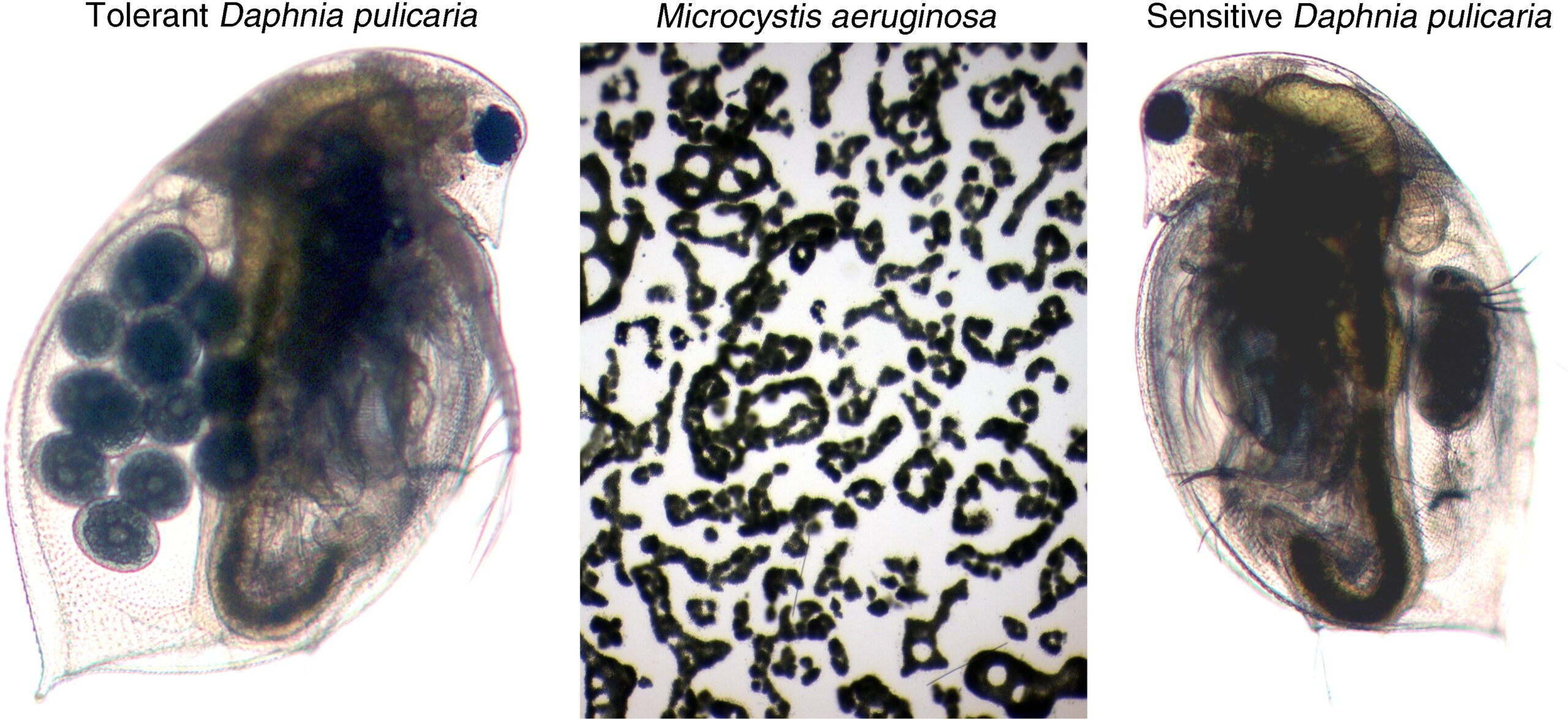
Chislock, M. F., O. Sarnelle, B. K. Olsen, E. Doster, and A. E. Wilson. 2013. Large effects of consumer offense on ecosystem structure and function. Ecology 94(11):2375-2380.
Abstract
Study of the role of within-species adaptation in ecological dynamics has focused largely on prey adaptations that reduce consumption risk (prey defense). Few, if any, studies have examined how consumer adaptations to overcome prey defenses (consumer offense) affect ecosystem structure and function. We manipulated two sets of genotypes of a planktonic herbivore (Daphnia pulicaria) in a highly productive ecosystem with abundant toxic prey (cyanobacteria). The two sets of consumer genotypes varied widely in their tolerance of toxic cyanobacteria in the diet (i.e., sensitive vs. tolerant). We found a large effect of tolerant D. pulicaria on phytoplankton biomass and gross primary productivity but no effect of sensitive genotypes, this result stemming from genotype-specific differences in population growth in the presence of toxic prey. The former effect was as large as effects seen in previous Daphnia manipulations at similar productivity levels. Thus, we demonstrated that the effect of consumer genotypes with contrasting offensive adaptations was as large as the effect of consumer presence/absence.
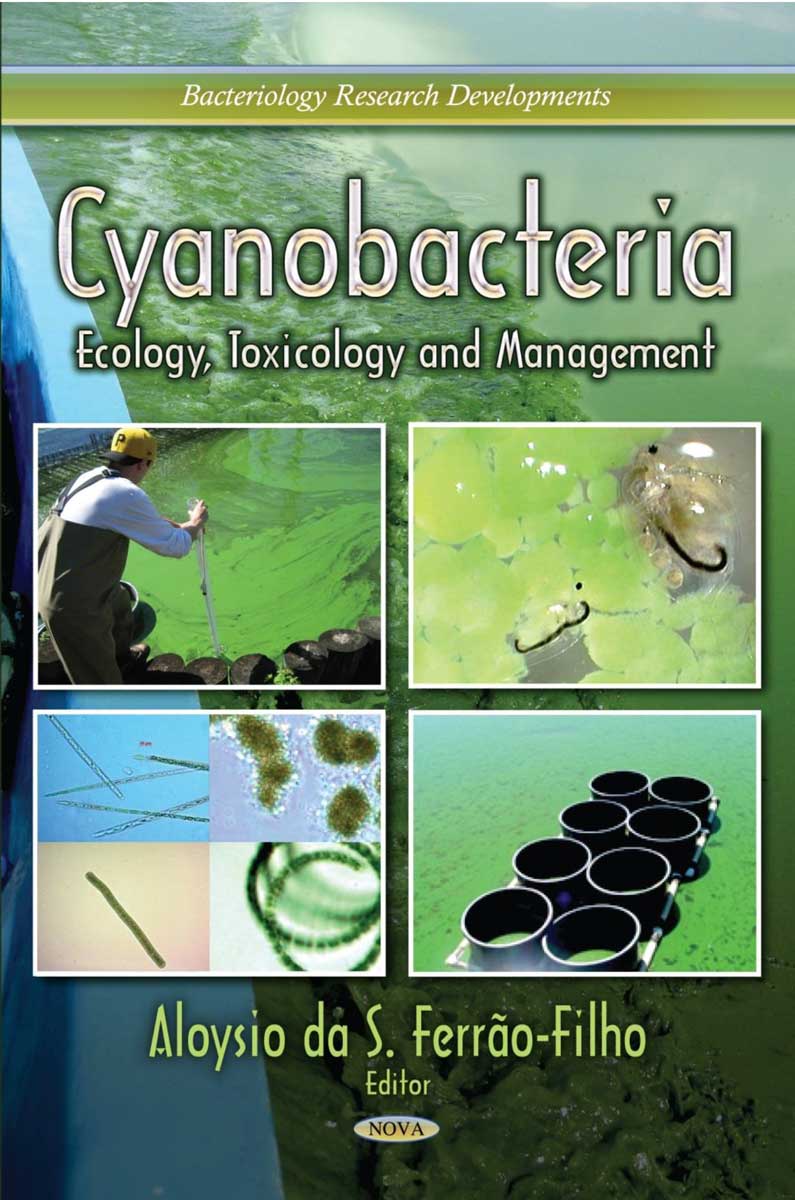
Vanderploeg, H. A., A. E. Wilson, T. H. Johengen, J. Dyble, O. Sarnelle, J. R. Leibig, S. D. Robinson, and G. P. Horst. 2013. The role of selective grazing by dreissenid mussels in promoting toxic Microcystis blooms and other changes in phytoplankton composition in the Great Lakes. Invited book chapter in Quagga and Zebra Mussels: Biology, Impacts, and Control, Second Edition. Editors: T. Nalepa and D. Schloesser. CRC Press, Boca Raton, Florida. pp. 509-524.
Abstract
We investigated the feeding response of zebra and quagga mussels to Microcystis aeruginosa strains from culture collection and from natural seston from Saginaw Bay (Lake Huron), western Lake Erie, and enclosures from Gull Lake, an inland lake in Michigan. These experiments were done to evaluate the roles of strain identity, toxin concentration (microcystin), colony size, and environmental phosphorus concentrations as they affect ingestion or selective rejection of Microcystis in pseudofeces and potential Microcystis bloom promotion through the selective-rejection process. A combination of traditional feeding experiments with mussels confined in beakers and videotaping of mussel behavior was used. We measured changes in Microcystis concentration in the feeding experiments using changes in chlorophyll and the toxin associated with Microcystis (microcystin) in small (<53 μm) and large (>53 μm) size fractions. In natural seston, most colonies fell within the large size fraction. Overall, there were complex interactions that could not be simply explained by microcystin concentration, colony size, or environmental P concentration. Experiments with toxic and nontoxic strains from culture collection indicated different reasons for rejection. In one nontoxic strain having colonies in both the small and large fractions, small colonies were ingested, while large colonies were not. In another nontoxic strain, consisting only of large colonies, no colonies were ingested; however, when the colonies were broken apart by sonication, no small colonies or even single cells were ingested. Video observations showed that both of these strains were readily captured and rejected in pseudofeces after a large number were collected. Mussels fed upon the small colonies of a moderately toxic strain, whereas for another less toxic strain, no feeding occurred. When mussels were induced to feed on this latter strain by adding Cryptomonas—a favorite food of mussels— to the suspension, one of the mussels showed extreme sensitivity to Microcystis by rejecting each colony as they entered the incurrent siphon. Experiments with Microcystis having moderate microcystin concentration from both the low P (Saginaw Bay) and high P (Maumee Bay) sites in the Great Lakes were rejected. Microcystis from enclosures in Gull Lake was ingested despite having very high microcystin concentrations. Whether the selective-rejection process results in a Microcystis bloom depends on both mussel abundance and environmental P concentration as they affect mortality and growth rate of algae competing with Microcystis, as well as the composition of different Microcystis strains (genetic identities) that can coexist at the same time in the same water body. Questions for future research and research approaches to understand these complex interactions are outlined.